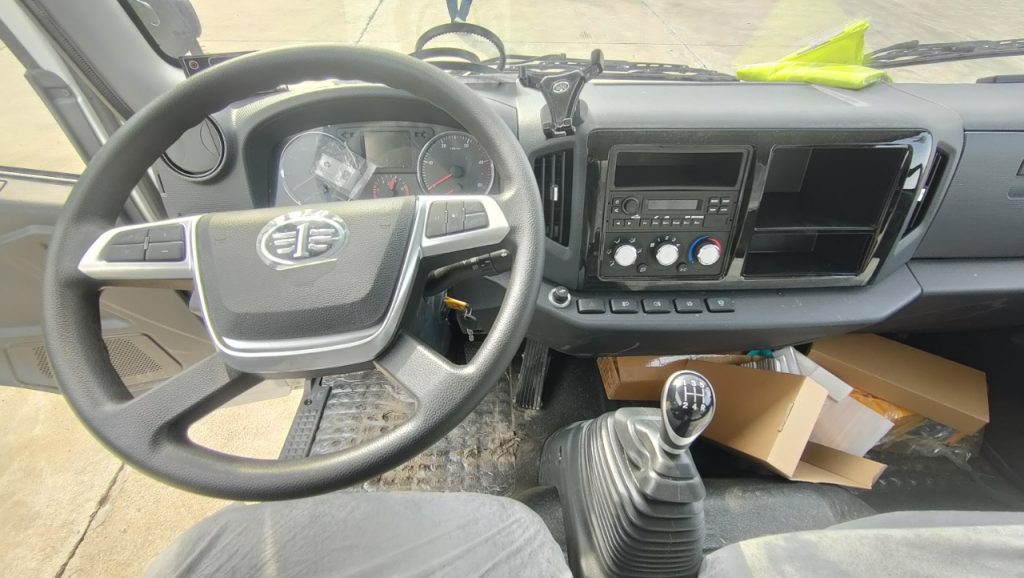Introduction
Work trucks play a vital role in various industries, including construction, agriculture, and transportation. These vehicles are essential for carrying out heavy-duty tasks and ensuring the smooth operation of businesses. One crucial component of work trucks that often goes unnoticed is the exhaust system. The exhaust system of a work truck plays a significant role in ensuring optimal performance, fuel efficiency, and environmental compliance. In this comprehensive guide, we will explore the importance of work truck exhaust systems, their components, functions, maintenance, and how they can be optimized to enhance performance and efficiency.
mechanical sweeper truck of Work Truck Exhaust Systems
Work truck exhaust systems are designed to manage and remove the toxic gases produced during the combustion process in the engine. These gases include carbon monoxide, nitrogen oxides, and hydrocarbons, which are harmful to the environment and human health. The exhaust system ensures that these gases are safely directed away from the vehicle and released into the atmosphere. In addition to emissions control, the exhaust system also plays a crucial role in noise reduction, improving fuel efficiency, and optimizing engine performance.
Components of Work Truck Exhaust Systems
1. Exhaust Manifold: The exhaust manifold is the first component of the exhaust system that collects the exhaust gases from the engine cylinders and directs them towards the rest of the system.
2. Catalytic Converter: The catalytic converter is responsible for converting harmful pollutants into less harmful emissions through a chemical reaction. It contains precious metals such as platinum, palladium, and rhodium that facilitate this conversion process.
3. Diesel Particulate Filter (DPF): In diesel vehicles, the DPF captures and stores particulate matter from the exhaust gases and periodically burns it off to prevent clogging and reduce emissions.
4. Exhaust Pipes: Exhaust pipes carry the gases from the engine to the rear of the vehicle and are often made of stainless steel or aluminized steel to withstand high temperatures and corrosion.
5. Muffler: The muffler reduces noise levels by using sound-absorbing materials and chambers to dampen the sound waves generated by the engine.
6. Exhaust Tips: Exhaust tips are the visible part of the exhaust system that extends beyond the rear of the vehicle. They can be customized for aesthetic purposes and may also impact exhaust flow and sound.
Functions of Work Truck Exhaust Systems
1. Emissions Control: The primary function of the exhaust system is to control and reduce harmful emissions released into the atmosphere, thereby helping work trucks comply with environmental regulations.
2. Noise Reduction: The muffler and other components of the exhaust system help minimize the noise generated by the engine, creating a quieter working environment for operators and bystanders.
3. Backpressure Regulation: The exhaust system helps regulate backpressure in the engine, which can impact engine performance and fuel efficiency. Proper backpressure ensures optimal engine operation.
4. Heat Dissipation: The exhaust system helps dissipate the heat generated by the engine during combustion, preventing overheating and damage to sensitive components.
5. Optimal Engine Performance: A well-designed exhaust system can contribute to improved engine performance by enhancing exhaust flow, reducing restrictions, and optimizing fuel combustion.
Maintenance of Work Truck Exhaust Systems
Proper maintenance of work truck exhaust systems is essential to ensure their longevity, performance, and compliance with emissions standards. Here are some key maintenance practices:
1. Regular Inspections: Conduct visual inspections of the exhaust system for signs of damage, leaks, rust, or corrosion. Check the mounting brackets, hangers, and connections for wear and tear.
2. Exhaust Leak Detection: Listen for unusual noises, such as hissing or rattling, that may indicate an exhaust leak. Leaks can lead to decreased performance, increased emissions, and safety hazards.
3. Emissions Testing: Periodically test the emissions output of the work truck to ensure compliance with local and federal regulations. Address any issues promptly to avoid fines and penalties.
4. Cleaning and Rust Prevention: Clean the exhaust system components regularly to remove dirt, debris, and carbon buildup. Apply rust inhibitors or coatings to prevent corrosion and extend the life of the system.
5. Replacing Worn Components: Replace worn-out or damaged components of the exhaust system, such as gaskets, hangers, or mufflers, to maintain optimal performance and prevent further damage.
Optimizing Work Truck Exhaust Systems for Performance and Efficiency
To enhance the performance and efficiency of work truck exhaust systems, consider the following tips and strategies:
1. Upgrading to High-Performance Components: Replace stock exhaust components with high-performance alternatives, such as aftermarket exhaust manifolds, catalytic converters, or mufflers, to improve flow and reduce restrictions.
2. Tuning and Customization: Work with a professional tuner or exhaust specialist to optimize the exhaust system for your specific work truck application. Customized tuning can improve power output, fuel efficiency, and overall performance.
3. Exhaust System Design: Consider the design and configuration of the exhaust system, including pipe diameter, length, and layout. A well-designed system with smooth bends and minimal restrictions can enhance flow and efficiency.
4. Cold Air Intake: Installing a cold air intake system can complement the exhaust system by providing cooler, denser air to the engine, resulting in improved combustion and performance.
5. Regular Maintenance and Inspection: Stay proactive with exhaust system maintenance by conducting regular inspections, cleaning, and maintenance tasks. Address any issues promptly to prevent costly repairs and downtime.
Conclusion

Work truck exhaust systems are critical components that play a significant role in ensuring optimal performance, efficiency, and compliance with emissions standards. By understanding the importance of exhaust systems, their components, functions, and maintenance requirements, work truck operators can take proactive steps to enhance the performance and longevity of their vehicles. Whether through upgrading to high-performance components, tuning for customization, or implementing regular maintenance practices, optimizing work truck exhaust systems can lead to improved efficiency, reduced emissions, and a smoother operation overall. By investing in the care and maintenance of exhaust systems, work truck operators can maximize the productivity and reliability of their vehicles for years to come.
